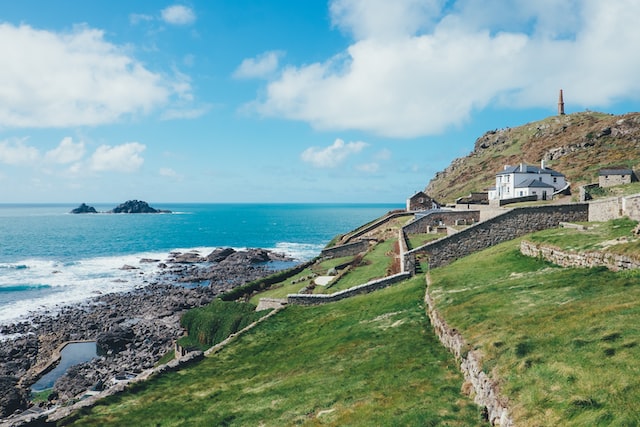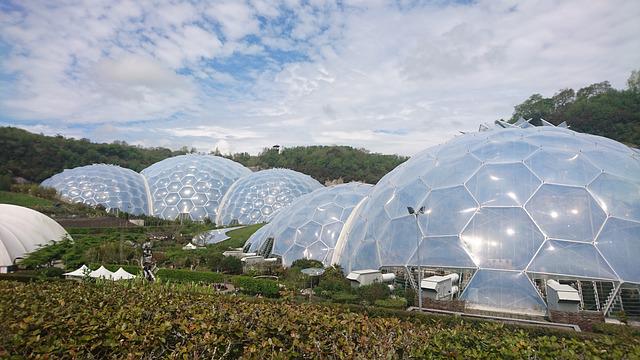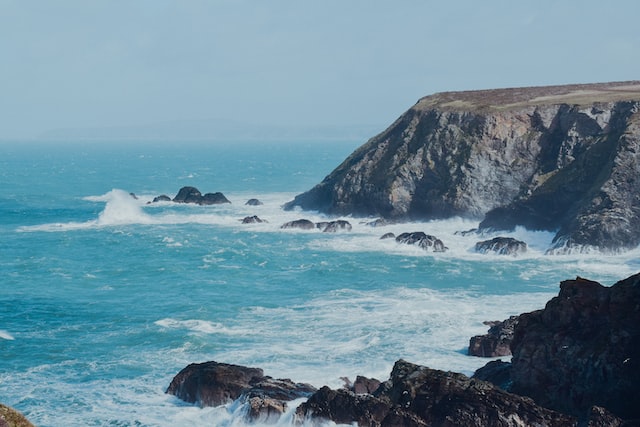Planning a road trip to Cornwall? Here we’ll tell you the most spectacular places to visit, the best beaches, picturesque towns, and the very best attractions.
Located on the southwestern peninsular of England, Cornwall is known for its gorgeous beaches and has plenty of culture and history for you to sink your teeth into.
Read on to discover more about what you can get up to on your Cornwall road trip. First, though, we’ll find out the best time to visit and whether it is difficult to drive around the county.
Let’s get motoring.
What’s the Best Time to Visit Cornwall?
The best time to visit Cornwall, if you want to avoid the hustle and bustle of the school holidays, is either in April, May, or September. Avoid the peak summer months of July and August if you are not comfortable with crowds.
The weather starts to improve in April, and the longer days leave more time to enjoy many cool outdoor activities. September is also an option, as there will be fewer people about and there is still a chance of getting some decent weather.

How Many Days do I Need in Cornwall?
You can visit Cornwall over a long weekend and fit plenty in, but a week would be better if you want to see more highlights of this beautiful county. If you want to take things at a more relaxed pace and have more time on the beach, you could holiday here for two weeks.
Later, we’ll share some suggestions on what you can do on your visit and point out places to stay. For now, it’s time to talk about driving in Cornwall.
Is Driving in Cornwall Difficult?
Driving in Cornwall can differ greatly from driving in towns and cities. Therefore, it can be challenging for first-time visitors to navigate lesser roads.
There are no motorways in Cornwall, and you will need different driving skills when you venture off the beaten track and face steep, narrow country roads. If you don’t think you have the right car for a road trip check out our “Ideal Family Car” article .
Luckily, we have some tips to help you out. Read on and you’ll know what to do if you face a vehicle heading towards you on a single-track road, you’ll be better able to plan the perfect Cornwall road trip and might pick up some other things too.
- Stick to A roads if you want to visit the county’s top attractions, it’s best to stay on the A roads to avoid getting lost on lesser-known back roads and arrive at your destination in a timely manner.
- You might have to venture onto a few single-track roads to find the hidden gems Cornwall has to offer.
- Your Satnav will often direct you to places using the quickest possible route. When driving in Cornwall, this might mean you have to face back roads and steep inclines.
- If you’re a confident driver, the rewards for straying off the beaten track to explore scenic country roads are considerable. For the less confident though, it may be wise to take a paper road map as a backup.
- It can be difficult to spot oncoming traffic on Cornish roads, because of the high hedgerows, so be careful and sound your horn when you’re approaching a blind bend.
- Brush up on your reversing skills, so that you can back up if there is no room to pass another vehicle on narrow roads. If you want to avoid these as much as possible, stick to the main roads.
- Take note of the last passing place you saw in case you need to reverse on a single-track road and give way to vehicles travelling uphill.
- If you only have one driver in your party, you can always plan the odd day out without the car and make use of public transport.
How Long Does it Take to Drive Across Cornwall?
You can drive from the Devonshire border to Land’s End in about two hours if there’s no traffic. You can drive across Cornwall at its widest point in just over an hour.
If you have an itinerary, you will probably be stopping often and will not be in the car for long.
Next, we’ll go through some ideas on how you can fill your days in Cornwall and make the most of your time.
Itinerary ideas for a 7-day Cornwall road trip
Here, we’ll share some ideas you may want to include in your itinerary for your weeklong road trip. You can choose ones that suit you.
Tintagel Castle
If you like castles and Arthurian legend, you’ll want to visit Tintagel Castle. Located on the northern coast of Cornwall outside the village of Tintagel, the ruins of this medieval castle are associated with Arthurian legend.
The link was strengthened when Tintagel was romanticized in the poetry of Alfred, Lord Tennyson in the Victorian era.
It is run by English Heritage, so members can get in for free. A walk around the small island affords spectacular views, even if you don’t believe in the legend of King Arthur.
You’ll find Bodmin Moor close by and can visit the charming fishing village of Boscastle. If you fancy some exercise, there are some beautiful hiking trails running along the coast in this area.
Fishing villages
Fishing has been key to Cornwall’s economy for hundreds of years and is still crucial to Cornish life today. Many Cornish villages spread out from a harbour, which remains the heart of the village.
This makes such villages picturesque and well worth a visit to sample the local cuisine.
Some of the best fishing villages in the area include:
Polperro – This is a cute little fishing village on the southeast coast, with a lovely walk to Looe via Talland Bay nearby.
Charlestown – Found on the south coast near the town of St. Austell, this 18th-century port and fishing village was used to export clay. The harbour is typically home to several tall ships, and you can find out all about shipwrecks all around the globe at the local museum. Charlestown has served as a filming location for many films and TV shows, including the popular Poldark.
Port Isaac – Known for featuring in the TV series Doc Martin, this village is found on the north coast of Cornwall. The natural harbour boasts gorgeous views if you don’t mind braving the crowds.
Mousehole – Found near the town of Penzance, Mousehole has a range of shops and has been an important spot for fishing since the 14th century. There is also a lovely beach here.
Boscastle – Located near Tintagel Castle, this village is known for its beautiful natural harbour. The National Trust owns much of the village and the lands around it and runs a highly informative visitor centre.

The Eden Project

The Eden Project is one of the best-known attractions in Cornwall. The site is made up of overlapping domes. The tropical dome is the largest of them and is akin to an indoor rainforest, where you’ll find a vast array of tropical plants, from rubber and banana to bamboo and coffee.
In the smaller Mediterranean biome, you’ll find a wide variety of plants that grow in a temperate environment. You can also explore the large botanical gardens on site and admire the art installations dotted around.
This can be an enjoyable way to spend at least half a day.
Bodmin Moor
Bodmin Moor is an excellent place for a hike. An expanse of moorland, it boasts interesting features, including several large freestanding granite outcrops sticking out of the ground called tors. Brown Willy is the tallest of these tors and will afford plentiful photo opportunities.
It’s also worth a visit to see the ponies roaming freely on the moorland, sure to please any animal lovers. Add to that some fantastic views and who wouldn’t want to visit?
The beaches
The beaches of Cornwall are a huge draw for visitors. With a coastline stretching for more than 250 miles, you have over 300 beaches to choose from.
If you are a keen surfer, some of the beaches on the northern end of the county have excellent conditions. Many of them have gorgeous golden sands and shimmering blue waters.
They promise a relaxing day of sea and sun.
History of mining
Apart from fishing, the county is also known for its associations with tin mining. The height of Cornish mining came in the 19th century when tin and copper were mined here, and Cornwall was known as one of the richest existing mining locations, with the last mine closing as recently as 1998.
The Cornwall and West Devon Mining Landscape is today designated as a UNESCO World Heritage site. If you enjoy history, you’ll want to visit one of the preserved mines in the county, such as the Greevor Tin Mine, which operated from 1911 until 1990.
You can satisfy your curiosity at the excellent museum found on-site and learn about the life of a miner.
Lizard Point

There are many coves and glorious beaches in this area, including Poldhu beach. You will also find some lovely coastal walks on the Lizard Peninsula.
Lizard Point is the southernmost point of mainland Britain. It is run by the National Trust and is free to visit.
You can also go and see the Marconi Sites on the Lizard Peninsula. This is where Marconi broadcast the first ever transatlantic radio transmission and did many other wireless experiments besides.
The Marconi Centre is also free to visit.
St. Michael’s Mount
Not far up from the Lizard Peninsula, you will find St. Michael’s Mount. It is home to a medieval church and castle. The same order of Benedictine monks who developed the Mont St. Michel developed St. Michael’s Mount to be a place of worship.
The walk across the causeway to the island is accessible at low tide and takes about a quarter of an hour. There you can look at the garden, church, and castle.
It is operated by the National Trust, and there is an entry fee for non-members.
Next, we’ll look at some of the best hotels to stay at during your visit.
Where to Stay on a Road Trip to Cornwall
Cornwall has a range of accommodation options available. Here is our list of some well-rated hotels and B&Bs located at various points in the county that would suit a variety of different budgets.
The Pityme Inn – Found less than two miles from Polzeath beach in the town of Wadebridge, this three-star Inn has an on-site restaurant and bar and offers en-suite accommodations.
St. Christopher’s Inn – Located near Towan Beach in Newquay, this is a popular hotel for surfers. This hotel’s main selling point is its surf school if you want to learn the skill. You can get shared and private rooms here.
The Jamaica Inn – Made famous by the Daphne du Maurier novel of the same name, this is an attraction in its own right and has a restaurant, bar, and its own museum. It’s on Bodmin Moor, so is a prime location if that is one of the planned stops on your road trip.
Primrose House, St. Ives – This highly rated guesthouse, part of an Edwardian Villa, it is a beautiful location and boasts fantastic views.
The Wellington Hotel -This hotel is a mere 10-minute walk from the village of Boscastle and is a prime location from which to visit some of Cornwall’s top attractions. There is an award-winning restaurant and bar, and the great en-suite rooms get good reviews.
The Lewinnick Lodge – Found just a short drive from Newquay, you can enjoy breath-taking views and luxury accommodation at this boutique hotel.
The Penellen Bed and Breakfast – This beachfront B&B has four stats and has some magnificent views you can enjoy from en-suite rooms.
Wrapping Up
You should now have everything you need to plan a great road trip to Cornwall. We’ve covered the best time of year to visit, how long you’ll want to stay to make the most of your trip, and shared some tips to make driving in Cornwall a little easier if it’s your first time.
So, why not start planning your Cornwall road trip today? You can choose where to stay and include some of the attractions we’ve recommended to ensure you have an interesting, fun-filled trip.
Have a great time!
Don’t fancy travelling to Cornwall, check out our post on a Road Trip Lake District, or maybe a Scottish one, to see if that’s more your thing
